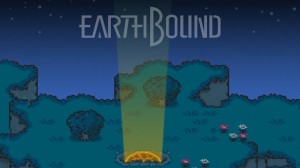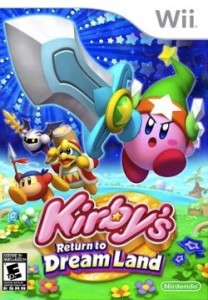Greetings again readers of all nations, it has continued to be a turbulent news week in and out of videogaming but as with my column last week I am determined to find a calm in the storm. And in doing so I found another little nagging subject matter about my favorite topic to rant about discuss: Nintendo. No doubt in previous articles, while attempting to untangle the profound mysteries of this little Japanese company, I touched upon their odd handling of advertising. It should probably be of little surprise that a company as odd as Nintendo also handles their advertisements oddly, but I thought the subject deserved its own day in the sun, and so I will go over a couple of prime examples of their advertisement strategies and the impact they had.
Going back a ways to the NES in the US, Nintendo quickly became a must-have item for the holidays in the videogame vacuum left behind by the then-recent crash. Games were still largely considered to be the next big fad to be passed over eventually for another toy, but popularity is popularity and Nintendo benefited from it like they would any other kind. As aloof as Nintendo is often painted by myself, and doubtless by many others, they do sometimes demonstrate a capacity for cunning in their product design. The NES, for example, was given that name of Nintendo Entertainment System, knowing that terms like “Video Game” would turn off buyers still aware of the Atari crash. In Japan the name was even more obscured with the title Famicom, a shortening of Family Computer. However the naming trick was only a means to get the system in the door, the games and the popularity of those games are what kept the system moving off of store shelves.
Moving forward a bit to the SNES era, Nintendo was now firmly in their power position (perhaps the most powerful position they would ever hold in the home console business) with every major developer subject to their terms and a very large market share even in the face of Sega’s competition. However, Nintendo still had one weakness in their company structure and that was understanding foreign markets. Very comfortable and familiar with their domestic market of Japan, Nintendo, as with many other Japanese games companies, frequently demonstrated uncertainty and doubt when it came to markets like the US. Some games were withheld on the arbitrary notion that they were too difficult for foreign markets (Fire Emblem) while others were dressed up in absurd ways that all but sealed their fates.
Enter Earthbound, known in Japan as Mother, a bizarre little RPG made by Nintendo’s internal studios. The game focused on music and rhythm in ways no other game, let alone RPG, had really done before. It also eschewed the high fantasy settings of other RPGs in favor of a more simple story of a modern day boy and his friends in their home town. By the second entry in the series Nintendo decided to bring the game state-side but were still uncertain about how well it would appeal to a Western audience that they feared would not be receptive to a cutely designed RPG. So the response was to dress Earthbound up as some gross out game with a ’90s childhood rebellious streak in line with Bart Simpson. The game, of course, had little to do with any of these aspects but it was not for false advertising that the game did not make an appeal. The attempts to Westernize the game actually only repelled people, sometimes in a very literal sense thanks to magazine advertisement inserts that contained fart and garbage smelling scratch-n’-sniffs. After one whiff of that famously bad ad campaign Earthbound retreated back to Japan for good.
Very conversely, and seemingly only when backed into a corner, Nintendo would later pull out that rare cunning and put together one of the single best advertising campaigns for any company when they devised their strategy for the Wii. Taking full advantage of their new try-it-to-believe-it motion control gimmick, Nintendo collaborated with all kinds of Western media celebrities and outlets to show off and otherwise gush about the next big thing in entertainment. Again, they removed themselves somewhat from the association with videogames which were considered a solitary and overly complex hobby for kids and teens. Instead of that imagery, Nintendo aimed for as much inclusiveness as possible even in the design of the console and controller. The result was the next big Nintendo fad-boom not unlike what they experienced during the NES. Wiis flew off of shelves, waiting lines for pre-orders wrapped around buildings, accessory and software shortages drove online scalpers to absurd prices, and it all kept getting driven home by the ingenious “Wii would like to play” ad campaign.
The successes of the Wii did peter out eventually, but not before the console stayed at the top of the charts for years on end. And while the relatively small Nintendo would benefit wildly from this kind of product movement, they still showed that they were the same uncertain games publisher they had been in the ’80s. To this day Nintendo withholds certain franchises from the West (Mother 3) and still thinks the market here requires an extra serving of badass-cool on their videogames when making certain design choices like with the Kirby boxart. In most every release of a Kirby game to the US, the boxart has been changed slightly to give the otherwise lazy and cute hero some cartoon angry eyebrows. Nevermind that the game itself is the furthest one can get from “angry”, Nintendo still feels that this market will not respond to a cute or non-aggressive hero. It is a bit unusual that a company can go from capturing the desire for a fad so well to still assuming games in America cannot sell unless they are hyper-aggressive. But I have given up on ever truly understanding Nintendo, especially when I think they confuse themselves sometimes.
So give me your stories about Nintendo’s advertisements that you remember. They never did run too many commercials in the US, but as a kid I recall the ones I saw to be fairly funny. Maybe you have some insight on how Nintendo has advertised in other countries? Let me know in the comments and do not be shy about it!
Or maybe, just maybe, you have a whole bunch of other ideas you would like to divulge to the illustrious Lcom community. If that is so I implore you to check out the Employment Application here and also at the very bottom of the page. If you write well and like games you are probably a shoe-in! So give it a lookie-loo. Best part is I will be one of your bosses and I am a NICE guy! I promise.


